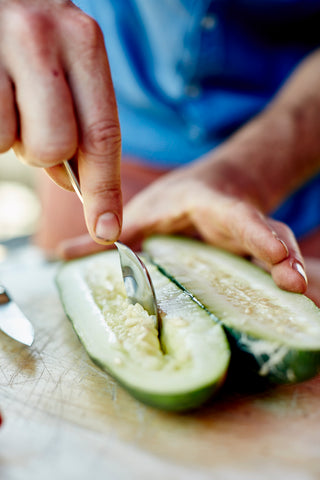Seed Saving

Seed saving is a basic gardening skill that is deeply programmed into all of us, albeit tucked away in the attic of our heritage. Seeds are very important. Seeds represent security, continuity and hope. They represent a long-standing agreement between humans and plants to contribute to one another’s mutual prosperity. You scratch a seeds back it will scratch yours with future crops. So it’s time to climb up into that attic, set aside that box of tangled fairy lights, flick through your VHS collection… get sidetracked… remember why you’re there and dust off what you need to know on seed saving.
There is no need to save that box your phone came in, or the receipts in your wallet (that have now faded beyond tax return recognition by the way), GET THEM OUTTA HERE! It is however well worth saving the seeds from your best-performing plants in the garden. You will slowly evolve varieties that are better adapted to the local environment. This practice will not only allow you to grow better food, but also save money in the process. It’s not hard to do and ultimately comes down to a few simple principles and practices.
Identifying Seeds
Most plants seed through fruit or flower. Though there are some exceptions like tubers and rhizomes. Most of us are familiar with fruit seeds, making themselves known on the chopping board where a tiny voice in your head says “I could probably save those”. Think tomatoes, eggplant (aubergine), squash, chilli, etc.
Plants like lettuces, herbs, garlic and onion are a little less obvious, because they often only produce seeds at the end of their life. You may have noticed at the end of the season some varieties get the better of you, you never get to pick quite enough lettuce or basil and then through seemingly overnight magic… your plant is now a bouquet. Collecting seeds varies slightly between the two types.
Collecting the Seeds

1. Fruit seeds are continuously produced and can be scooped out of the flesh with a spoon, knife or finger, or make use of that phone case you were saving, it’s now found it’s calling in life as a scooper.
2. Separate fruit seeds from other pieces of tissue by placing them in a sieve and running water over the top.

3. Seeds can be quickly dried on a plate when placed in a sunny position. They don’t need a leathery tan, just to be dried out to prevent moulding from moisture.
4. Non-fruiting plants, such as leafy greens, coriander (cilantro), broccoli and radish will produce flower heads at the end of their lifetime. Flowers will vary with each plant. Coriander and broccoli produce beautiful edible flowers, while others, such as cos (romaine) lettuce, will produce a thick tower. However, no matter how the flowering looks or tastes, the process is always the same – leave your best plant in the garden until the flowers/pods start to dry and brown off

5. Hang the flower in a cool dry place. We use the same technique for pods such as peas and beans. It can take a month for plants to become brittle enough to release their seeds, so be patient.
6. Fruit seeds, on the other hand, will dry within an afternoon and can be transported straight into a sealed container (more on this to come).

7. Once flowers or pods are dry and crunchy, you can break them apart with your hands or mash them into a sieve. This is called threshing and is an age-old method used to separate seeds from brittle plant material.
8. Seed collection is mostly just an exercise in labelling. It’s hard to tell the difference between a capsicum (bell pepper) seed and a ghost chilli seed a few months down the road, so always write down the variety. Unless of course you like a surprise. We have seed saving packets specifically for the job....and a seed tin to then store them in.

9. Store seeds in a cool dry place. Humidity and warmth shorten a seed’s life. Many people store seeds in a refrigerator, but anywhere cool and dry will be stellar. The garage, pantry or a closet are all great.
-
Posted in
harvesting
